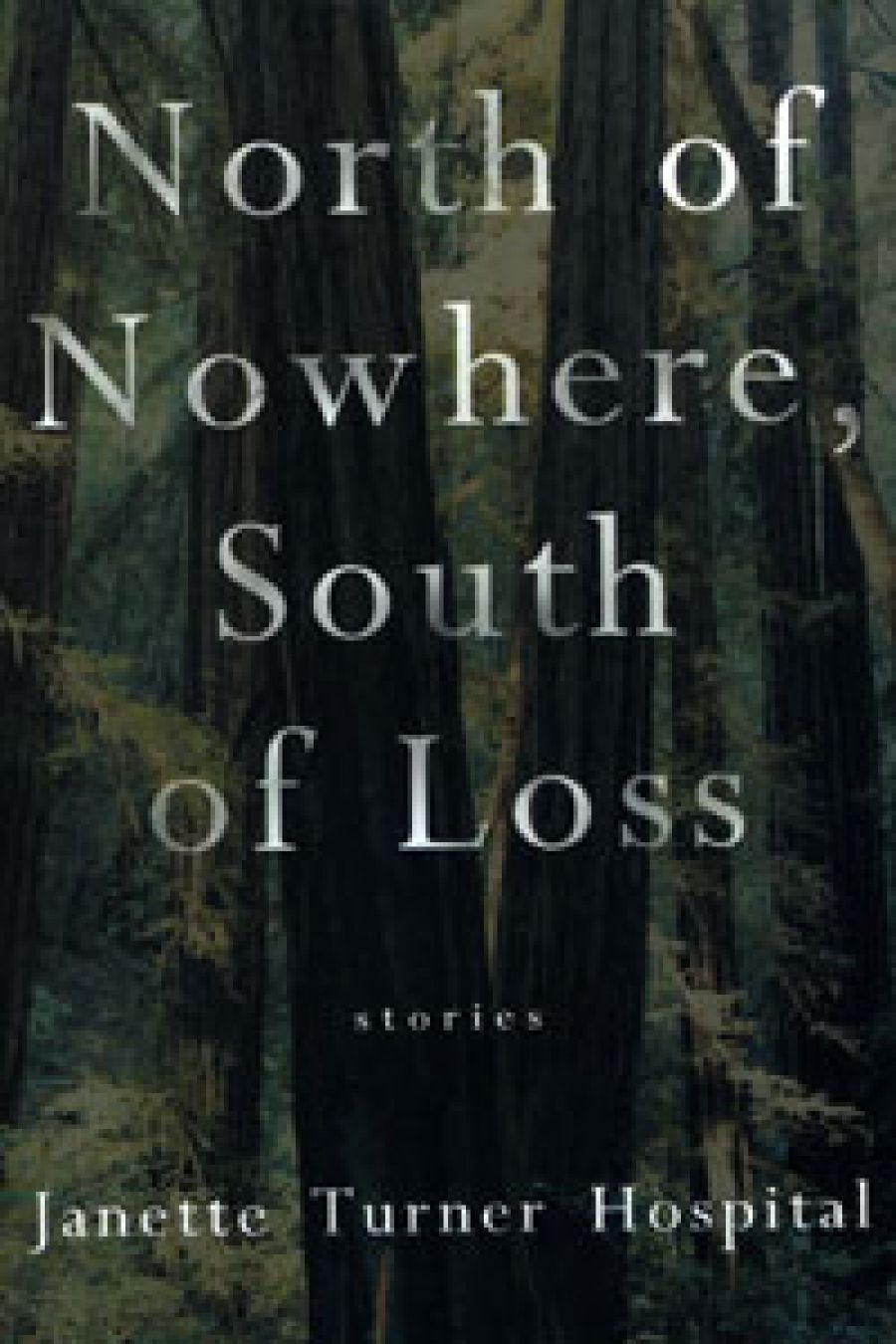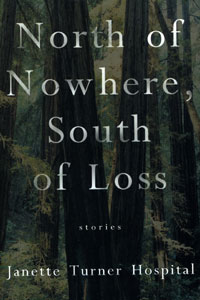
- Free Article: No
- Contents Category: Short Stories
- Review Article: Yes
- Article Title: Partridge Wings
- Online Only: No
- Custom Highlight Text:
Janette Turner Hospital fans, possibly reminded of their affection for her by the recent publication of her latest novel, Due Preparations for the Plague (reviewed in the June/July issue of ABR), will find this anthology an interesting exercise in retrospection. Collected here are fourteen stories published between 1991 and 2002 in various periodicals and anthologies from around the globe.
- Book 1 Title: North of Nowhere, South of Loss
- Book 1 Biblio: UQP, $24 pb, 286 pp
- Book 1 Cover Small (400 x 600):

- Book 1 Cover (800 x 1200):

Like most anthologies, North of Nowhere, South of Loss showcases the scope of its author’s output. The peripatetic nature of her life – raised in Queensland, she is now resident in South Carolina – is reflected in these stories’ settings, which include Canada, the US, Japan, France and Australia. ‘Credit Repair’, a character study set in an American public housing estate, depicts both deadening poverty and the choice of two women to use their privilege to help. Cleareyed about the seeming pointlessness of such aid, it nonetheless manages to end with a positive tableau. ‘For Mr Voss or Occupant’ is a mystery set in the Brisbane suburbs; its tone shifts cleverly from idyllic to foreboding, and finally to tragedy.
Wide though Turner Hospital’s range may be, what become most apparent in this collection are the continuities in her short fiction. Dislocation and disorientation are prominent themes here, as they are in much of her work. These stories are filled with people who shuttle from one country to the next, indeed feeling north of nowhere. Not only are they unsure of their physical location, they are often confused about time. ‘What time is it? What day? What week?’ asks Cecily in the story ‘Flight’.
Cecily receives a postcard, whose existence she later doubts. ‘She knows the mind is a very queer bird and an artful dodger of exceptional skill.’ Turner Hospital is fascinated by the queerness of the mind, the artful tricks it plays on memory and self-conception. Identities and events are elided, not only within but also between stories, in a manner that recreates the disorder and confusion of memory. A character who seems to be Cecily reappears in the next story, ‘Frames and Wonders’, referred to by the narrator merely as ‘the woman’ and by another character as ‘Odette’. In some stories, doubt is later cast on whether narrated events actually took place. Not just for Odette, but for many Turner Hospital characters, ‘History floats. Time flutters like partridge wings.’
Stylistically, much of Turner Hospital’s prose recalls the disjointed, dreamy thoughts of an inner voice. She often opens by launching the reader into a particular character’s consciousness, only gradually revealing the significance of the events he or she experiences. This invocation of interiority is one of the great strengths of her writing. Emotional worlds are taken very seriously by this author; she acknowledges their sometimes overwhelming power and importance, even when to the outside world they may seem illusory. The narrator of ‘Litany for the Homeland’ describes how she sees a school friend in various guises throughout her adult life: ‘He wears unpredictable names but I always recognise him by his eyes and by the mark of the outcast on his forehead.’ On each occasion, the new incarnation offers important insights.
These stories contain many of the motifs of Turner Hospital’s work: Brisbane childhoods; international working lives; characters haunted by events and people from their school days; obsessive relationships. Several characters speak of schoolchildren who were ‘marked’ as different, their status as victims therefore inevitable. The schoolyard is depicted as a place of violence and cruelty, to be survived rather than enjoyed. Paddy McGee in ‘Litany for the Homeland’ is beaten, then held out of a window by his brutal teacher; other children make a sport of kicking his friend Stella to the point where she learns to go numb.
Turner Hospital returns to characters Phillipa and Brian in several stories. By the end of the book, we have learnt, although certainly not in this order, that they met at school, had a competitive but close relationship, were both eager to leave Brisbane, and periodically reconnect after weeks or years, almost by the operation of an irresistible external force. As an adult, Phillipa is frustrated by Brian’s alternate elusiveness and arrogant demands for attention, and she ponders mysterious events from their childhood; Brian is a brilliant scientist whose ongoing disappearances indicate problems of his own. The sense of disorientation felt by these characters is powerfully reproduced in the format of a narrative fragmented into separate short stories.
One of the few criticisms that might be made of these stories is that their richness is too great, sometimes leading to a sense of frustration when the narrative ends. The dynamic between a dentist and his young but intelligent assistant is intriguing; their relationship seemingly could fill out a story much longer than that of ‘North of Nowhere’, which eventually focuses on Beth’s relationships with her vagrant brother and her fellow residents at a girls’ boarding house. The narrative potential of these stories is ultimately a strength, however; it leaves the reader uncertain in which direction the story will develop.
The collection finishes, appropriately, with ‘The End-of-the-Line End-of-the-World Disco’. People defiantly drink in a pub at the end of a Queensland train line as waters rise all around. They are bursting with reckless euphoria in the face of a millennial apocalypse. The dislocated people – here literally washed away from their home – and the vibrant emotions of this story represent the hallmarks of Turner Hospital’s style. While characters in some stories achieve resolution of sorts, closure and illumination are rare.
Thoughtful and engaging, these stories provide a pleasurable opportunity to reexperience in bite-sized chunks Turner Hospital’s narrative skills.


Comments powered by CComment